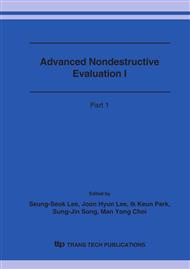p.795
p.799
p.804
p.808
p.813
p.817
p.821
p.825
p.831
Role of Intraoperative Infrared Thermography for Prediction of Successful Percutaneous Radiofrequency Sympathectomy for Palmar Hyperhidrosis
Abstract:
Tests for successful surgical results for refractory palmar hyperhidrosis in the past usually involve starch test, plethysmograpy, and direct measurement of skin temperature. However, these tests are either inconvenient, inadequate or unable to be used during operation. Authors have used IR thermography during percutaneous radiofrequency sympathectomy to verify its usefulness as guide for evaluating the successful results. A total of 14 patients with persistent palmar hyperhidrosis were included. Average age was 28.2 years (range 21-36 years). Average duration of symptom was 24 months. All procedures were percutaneously performed under local anesthetics. Procedures include position the patient in prone position and introduction of three 21-guage RF TIC needles with 10 mm bared tip electrode to T2 and T3 ganglion in each side under C-arm guidance. After obtaining correct placement of electrode, a series of three lesions at each level with 90 °C for 120s were done. Successful lesioning was confirmed by from marked widening of pulse amplitude with an increase in hand skin temperature (>2 °C) by thermographic examination during operation. Average follow up period was 14.4 months. All patients tolerated the procedure and responded immediately to have dryness sensation of hands, most of which remained for rest of follow up period. Twelve patients (85.7%) reported as having about 80% of initial responses and one patient about 60% at 12 months postoperatively. Another patient who lost about 30-40% of initial response had undergone second procedure 3 months later with similar success. There were no complications related to the procedures and there were no rebound phenomenon. With regards to the role of intraoperative thermography in determining the successful results, it seems to provide clear-cut information whether these patients received proper treatments for future successful outcome. Thus, authors believe IR thermogrpahic examination is simple, feasible way of demonstration of completeness of sympathectomy in object way during surgical procedure that can be used as a guide for successful outcome.
Info:
Periodical:
Pages:
813-816
Citation:
Online since:
October 2006
Authors:
Keywords:
Price:
Сopyright:
© 2006 Trans Tech Publications Ltd. All Rights Reserved
Share:
Citation:


